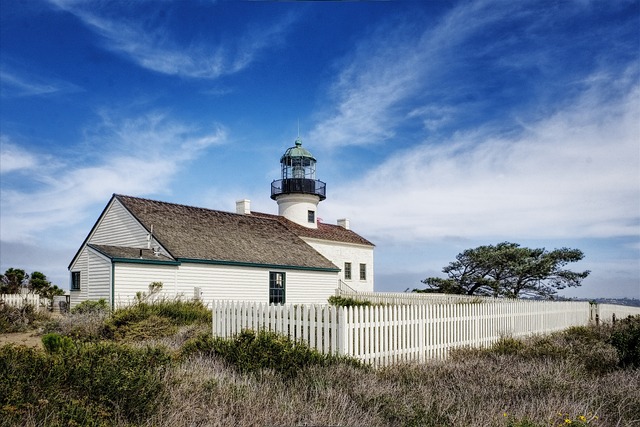Large properties present unique challenges when it comes to fencing, requiring solutions that balance functionality, aesthetics, and affordability. This article explores cost-effective fencing options tailored for expansive spaces, delving into the considerations that matter most. From understanding specific needs to evaluating traditional vs. innovative materials, we guide you through the process. Learn about sustainable choices, DIY installation pros and cons, maintenance tips, and essential legal guidelines to ensure a secure and stylish fence for your property.
- Understanding Large Property Fencing Needs
- Traditional vs. Cost-Effective Options
- Sustainable and Long-Lasting Materials
- DIY vs. Professional Installation
- Maintenance and Longevity Considerations
- Legal and Safety Guidelines for Fences
Understanding Large Property Fencing Needs
Fencing a large property presents unique challenges compared to smaller plots. The sheer size demands durable, long-lasting materials that can withstand harsh weather conditions and potential damage from wildlife or passing traffic. Moreover, aesthetic considerations come into play, as the fence should complement the natural surroundings and overall design of the property.
Security is another key aspect for large properties. Owners often require robust barriers to protect their families, pets, and valuable assets. Understanding these multifaceted needs is essential in selecting cost-effective fencing solutions that offer both functionality and visual appeal.
Traditional vs. Cost-Effective Options
Many property owners assume that fencing a large area requires traditional, expensive options like concrete or steel barriers. However, the landscape of fencing materials and methods has evolved significantly, offering cost-effective alternatives that don’t compromise quality or durability. These innovative solutions are especially beneficial for expansive properties, where traditional methods can be both financially and logistically challenging.
Cost-effective fencing doesn’t just refer to low initial costs; it encompasses long-term savings through reduced maintenance, longevity, and adaptability. Modern materials like vinyl, wood composite, and certain types of chain link offer excellent resistance to weathering and pests while eliminating the need for frequent painting or replacement. Additionally, these options often come with customizable designs, allowing property owners to enhance their aesthetic appeal without breaking the bank.
Sustainable and Long-Lasting Materials
When it comes to fencing large properties, opting for sustainable and long-lasting materials is a wise choice. Modern technologies have introduced innovative options that not only reduce environmental impact but also provide durability and low maintenance over time. For instance, recycled plastic and composite materials are becoming increasingly popular as fence posts and panels. These products, made from repurposed materials like plastic bottles or wood fibers, offer excellent resistance to rot, rust, and insect damage.
Compared to traditional wooden fences that may require frequent painting or treatment, these sustainable alternatives can last for decades with minimal upkeep. Moreover, they are versatile in design, allowing homeowners to choose from various styles and colors to complement their property’s aesthetic. By choosing environmentally friendly materials, property owners can contribute to a greener future while ensuring their fencing solution stands the test of time.
DIY vs. Professional Installation
When considering fencing for large properties, one key decision is whether to install the fence yourself or hire professional installers. Doing it yourself (DIY) can be appealing due to cost savings and the sense of accomplishment that comes with completing a project independently. It allows you to choose specific materials, designs, and styles to match your property’s unique needs and aesthetic preferences. DIY installation also gives you full control over the entire process, from measuring and marking the perimeter to setting the posts and attaching the fencing panels.
However, professional installation offers several advantages. Fencing experts bring specialized skills and experience, ensuring a higher level of quality and precision throughout the project. They can handle complex terrain, uneven ground, or challenging boundary lines with ease, providing a more secure fence that better stands the test of time. Professional installers also come equipped with the necessary tools and equipment, reducing the risk of injury and saving you significant time and effort compared to a DIY approach.
Maintenance and Longevity Considerations
When considering fencing solutions for large properties, it’s crucial to weigh maintenance requirements against upfront costs. While some materials may be more affordable initially, high-maintenance options can lead to significant long-term expenses. Regular cleaning, painting, or sealing is often necessary to prevent rot, corrosion, and damage from weather conditions, requiring time, effort, and specialized products.
Opting for low-maintenance fencing materials like treated wood, vinyl, or steel can save homeowners time and money in the long run. These options are designed to withstand various environmental factors, require minimal cleaning, and often come with extended warranties. Proper installation and occasional inspections further contribute to longevity, ensuring the fence remains functional and aesthetically pleasing for years to come.
Legal and Safety Guidelines for Fences
Fencing large properties comes with unique considerations, especially regarding legal and safety guidelines. Local governments often have stringent regulations in place to ensure fences do not obstruct public view or access, and to maintain aesthetic standards. Property owners must be aware of set-back requirements, height restrictions, and permitted materials to avoid costly adjustments or fines.
Moreover, safety is paramount. Fences should be robust enough to prevent unauthorized entry and keep children and pets secure. This involves selecting appropriate fence types, such as sturdy wood or metal options, and ensuring proper installation to withstand potential impact or force. Compliance with safety standards not only protects individuals but also prevents legal issues related to negligence.
